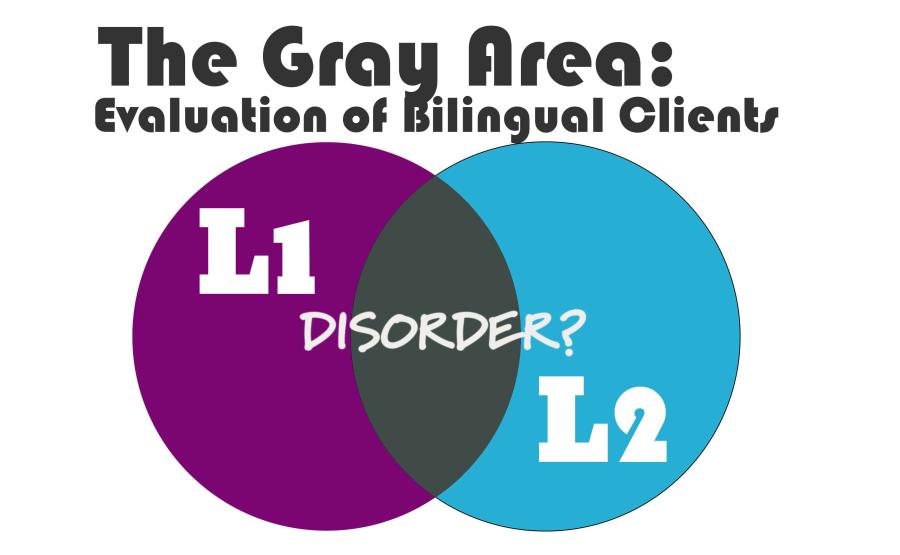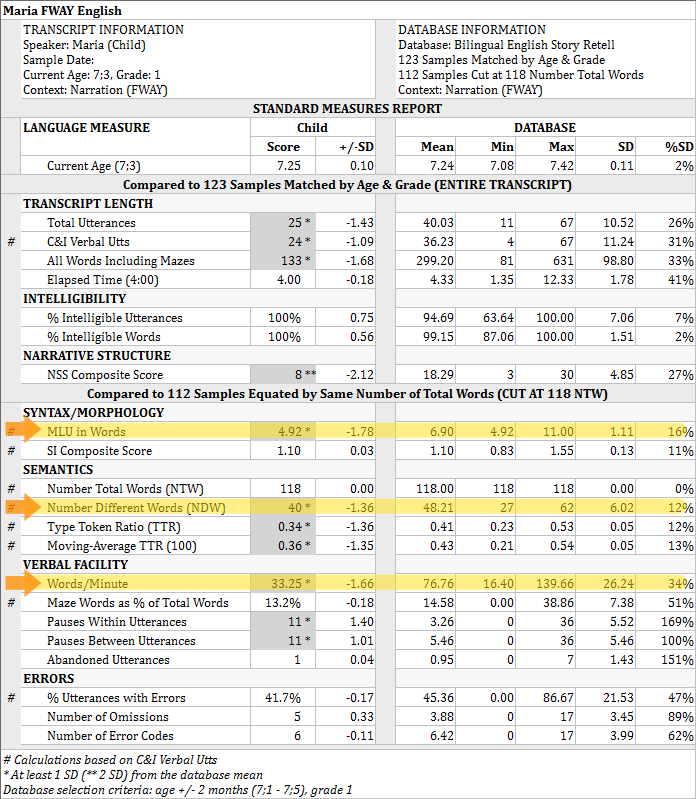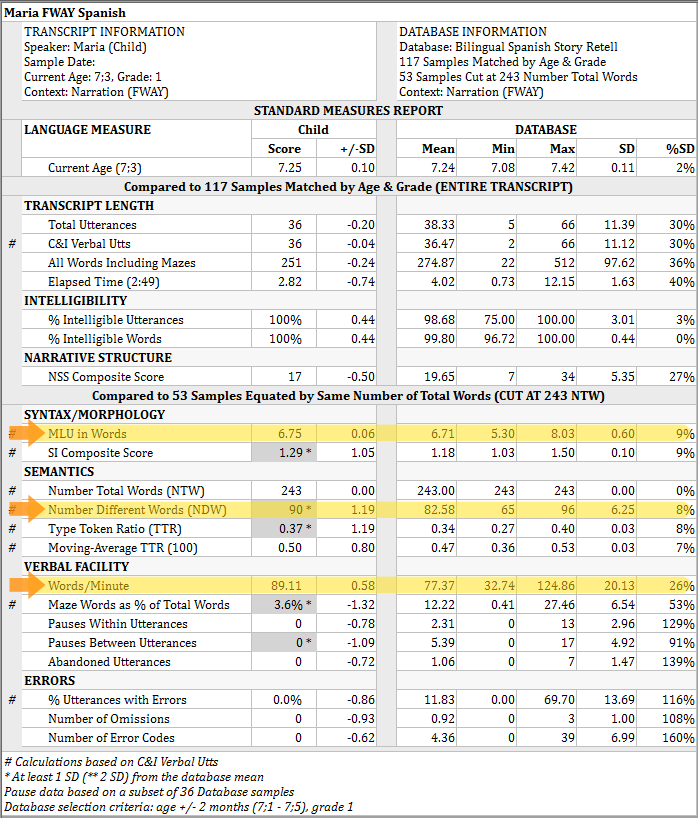
The Gray Area: Evaluation of Bilingual Clients

The Gray Area: Evaluation of Bilingual Clients
Published at: 2021-01-28
As SLPs we are responsible for assessing all learners who may potentially have a language disorder and of course this includes students with culturally and linguistically diverse backgrounds. In my own clinical practice as school-based SLP, I have to admit that when I hear about an upcoming evaluation of a bilingual student, I get a nervous. It’s overwhelming and a huge responsibility. We need the right kids on caseload: those who truly have a disability that is adversely impacting their education. If I over-identify (a false positive), I am enrolling a student into special education who does not need it. How frustrating! If I under-identify (a false negative), the student who needs services will be underserved and likely have more struggles academically later on in his/her education. According to author Steve Gill in his book, The ELL Critical Data Process- Distinguishing Between Disability and Language Acquisition (2018), in my home state of Washington, English Language Learners appear disproportionately within certain disability categories. Can you guess which category has the largest disproportionality? Yes, “Speech or Language Impairment!” The category with the second largest disproportionality is “Developmental Delay.” In contrast, the qualification categories with little disproportionality include: “Hearing Impairment,” “Visual Impairment,” and “Autism,” to name a few. This makes sense: a hearing or vision impairment, and even ASD, are easy to parse out from language impairment. And so it’s not surprising to me that there are most likely too many “false positives” popping up in our caseloads. We want to help kids and it comes from a place of good intention, but we really need to look at assessment of bilingual speakers in a very different way than their monolingual peers. This can feel uncomfortable, but it is needed if we are going to get the right kids on caseload. ASHA’s Practice Portal States, “True communication disorders will be evident in all languages used by an individual; however, a skilled clinician will appropriately account for the process of language development, language loss, the impact of language dominance fluctuation, and the influence of dual language acquisition and use when differentiating between a disorder and a difference” (2018).” This is a tall order that requires careful consideration. As a monolingual SLP, I feel insecure at times about completing a bilingual evaluation. I wish that I was fluent in Spanish (... and Chuuk, and Russian, and…) but the reality is that I am not. And I still need to competently evaluate students with linguistically diverse backgrounds. We might want to fall back on the familiar model of “compare to age-matched peers,” but that often does not work. Many bilingual students do not have a peer group on any standardized testing. Even if there is a monolingual test in the student’s native language (e.g., The Clinical Evaluation of Language Fundamentals-4, Spanish), we have to carefully consider the gray area of fluctuating language dominance between language-one and language-two. There are many non-standardized components to a bilingual evaluation. We of course have to consider exposure to and experience with the second language. It can take up to 5-7 years to develop academic language, even with adequate ELL instruction. We complete extensive parent interviews to answer questions like: Does the child have difficulty with his/her first language? Is the student child learning English at a slower rate than siblings? Is there a family history of language or learning difficulties? Best practice includes a language sampling as part of a bilingual assessment. We need to look at what language skills the student does have (whether in L1 or L2). If I have a bilingual Spanish/English evaluation I get really excited because I know that I can collect a story retell language sample in Spanish and English, and can then generate comparison data with bilingual peers using SALT software. And I can do this without speaking Spanish! I feel that this is about as fair of an assessment as I can do and I like the story retell task as it is academic in nature. The SALT Bilingual Spanish/English Story Retell reference database is comprised of bilingual – not monolingual - students completing the same task in English and in Spanish. The samples are from typically developing, bilingual students who may also be in the “gray area” of acquiring English while in school. The process is pretty simple:
- Collect samples in both languages;
- Transcribe the samples*;
- Analyze using SALT;
- Ask yourself: Are both languages evidencing impairment?
There are three measures that are indicative of difficulty with language across bilingual speakers. That simplifies the process even more. The three measures to examine are:
- Mean Length of Utterance (in words);
- Number of Different Words;
- Words per Minute (Iglasias, reference forthcoming).
Consider the following case study. Maria is 7 years and 3 months old, and is in a transitional bilingual first grade classroom. Spanish is the primary home language. Maria attended a monolingual English preschool prior to attending kindergarten. Her older sibling receives learning support services at school. Maria was referred due to teacher concerns with acquiring English. She speaks with a slow rate and seems to have hard time getting words out. We have Maria complete a narrative story retell of Frog, Where are You? (Mayer, 1969) in both English and Spanish. Maria’s Standard Measures Report (English) is below. Note that the three key measures (Mean Length of Utterance, Number of Different Words, and Words per Minutes) are below the database mean. Her sample is also relatively short with only 25 utterances.  Next, we look at the results of Maria’s Spanish sample. Note that none of the three key measures are lower than her bilingual peers. In fact, her number of different words is higher than the database average. Her mean length of utterance and her speaking rate were within the average range.
Next, we look at the results of Maria’s Spanish sample. Note that none of the three key measures are lower than her bilingual peers. In fact, her number of different words is higher than the database average. Her mean length of utterance and her speaking rate were within the average range.  Based on the story retell outcomes, Maria demonstrates adequate skills in Spanish but somewhat lower skills in English. It’s seems reasonable to suggest that Maria receive more instruction in English with possible interventions targeting of specific skills. However, intervention would be best delivered in the general education setting. We can rather confidently rule out a language disorder requiring specially designed instruction. A language sample is just one piece of a comprehensive bilingual evaluation, but it can be a valuable piece of figuring out the bilingual puzzle. *Transcription in a foreign language can be a bit of a trick, I admit. If needed, SALT Transcription Services has bilingual transcribers.
Based on the story retell outcomes, Maria demonstrates adequate skills in Spanish but somewhat lower skills in English. It’s seems reasonable to suggest that Maria receive more instruction in English with possible interventions targeting of specific skills. However, intervention would be best delivered in the general education setting. We can rather confidently rule out a language disorder requiring specially designed instruction. A language sample is just one piece of a comprehensive bilingual evaluation, but it can be a valuable piece of figuring out the bilingual puzzle. *Transcription in a foreign language can be a bit of a trick, I admit. If needed, SALT Transcription Services has bilingual transcribers.
References
ASHA. “Bilingual Service Delivery,” https://www.asha.org/PRPSpecificTopic.aspx?folderid=8589935225§ion=Key_Issues#Difference_vs._Disorder (Accessed: 13 Jan. 2019). Gill, Steve and Nanayakkara, Ushani. The ELL Critical Data Process- Distinguishing Between Disability and Language Acquisition, 2nd Ed. (CreateSpace Independent Publishing Platform, 2018). Iglasias, Aquiles. Citation forthcoming. Mayer, Mercer. Frog, Where are You? (New York : Dial Books for Young Readers, 1969).
No Comments yet. Be the first to comment.